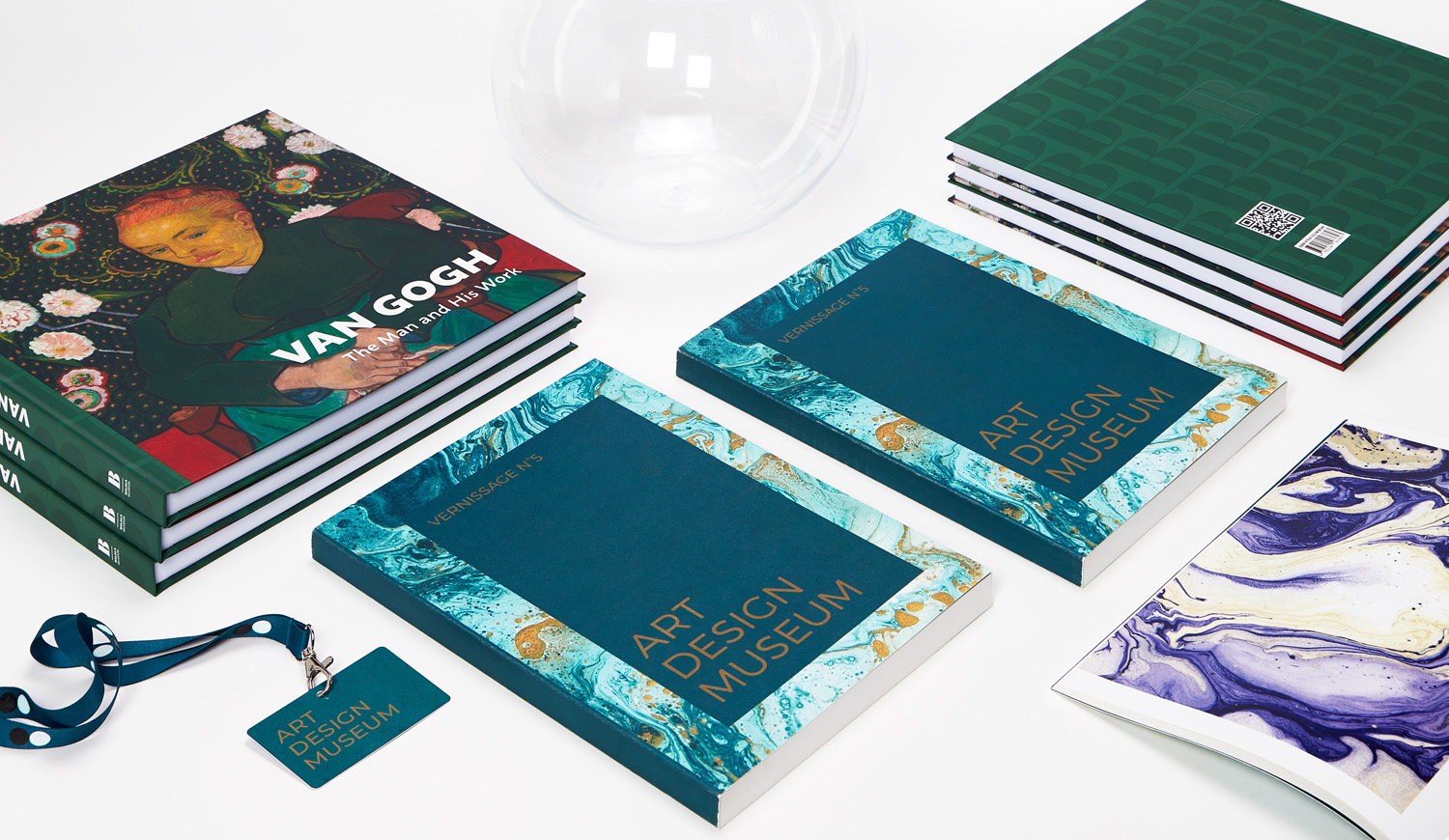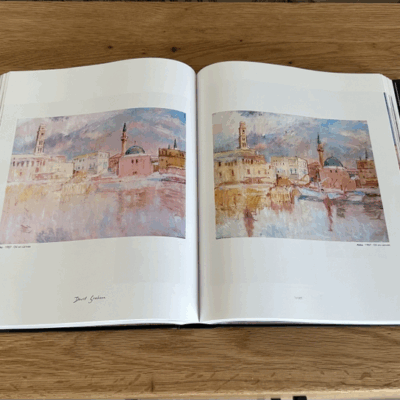A Complete Guide to Printing a Stunning art book
A Complete Guide to Printing a Stunning art book
Blog Article
Discover the Essential Guide to Art Book Printing for Aspiring Artists and Publishers
As an aspiring musician or publisher, understanding the nuances of art book printing is crucial to bringing your vision to life. You'll need to take right into account various factors, from choosing the appropriate kind of book to guaranteeing shade accuracy and picking appropriate materials. Each decision influences the end product significantly. What are the crucial aspects you should focus on to create a sensational art book that truly represents your work?
Recognizing Different Kinds of Art Books
When you dive right into the globe of art publications, you'll rapidly uncover that they can be found in different forms, each tailored to various artistic expressions and target markets. Coffee table publications usually display magnificent visuals, perfect for informal surfing, while monographs dive deep right into an individual artist's job, offering context and understandings. If you want specific art motions, exhibition catalogs supply comprehensive documentation of shows, featuring essays and reviews.
For instructional purposes, art handbooks and strategy publications guide you through different mediums and styles, making them crucial for striving artists. Each layout offers its purpose, and understanding their differences can enhance your art book trip.
Choosing the Right Paper and Products
Selecting the best paper and products can substantially impact the total top quality and feel of your art book. Start by thinking about the sort of art work you have. For lively colors and intricate details, choose for a glossy coating or a heavyweight matte paper that improves aesthetic depth. If your work features softer tones or textures, an all-natural or uncoated paper can provide a cozy, inviting touch.
Think regarding the weight of the paper, also. Thicker choices commonly offer an even more professional look, while lighter papers can decrease printing costs. Do not ignore the binding products; a tough cover can protect your web pages and contribute to guide's aesthetic.
Finally, take into consideration sustainability. Environmentally friendly alternatives are getting appeal and can mirror your worths as a musician. By meticulously choosing your paper and products, you'll ensure that your art book not only looks wonderful but also feels special in the hands of your readers.

Picking the most effective Printing Strategies
When it pertains to printing your art book, picking between countered and electronic printing can considerably influence your end product. You'll also wish to think about how paper top quality impacts the total appearance and feeling of your art work. Allow's explore these crucial printing techniques to locate the best fit for your task.
Balanced Out vs. Digital Printing
While both countered and digital printing have their benefits, choosing the ideal strategy for your art book can significantly influence the end product. Countered printing provides premium photos and dynamic shades, making it perfect for bigger print runs. If you're looking to generate hundreds or countless duplicates, offset will provide you consistent results and reduced per-unit prices. On the other hand, digital printing succeeds for smaller sized quantities and quicker turn-around times. It allows for simple modification, enabling you to print special copies without additional configuration prices. Consider your budget, timeline, and the volume of your job. Inevitably, your choice must straighten with your artistic vision and distribution technique, making certain that your art book reflects the high quality you prefer.
Paper Quality Considerations
Choosing the best paper top quality can substantially boost the aesthetic charm and tactile experience of your art book. Start by considering the weight and structure of the paper. Much heavier paper frequently really feels more extravagant and can better showcase vibrant shades and complex details. For prints, a glossy finish can make photos pop, while a matte surface offers a softer, more refined look. Do not ignore the paper's brightness; brighter sheets can boost shade accuracy and contrast.
Next, think of the sustainability of your option. Environmentally friendly options are ending up being progressively prominent and can appeal to environmentally-conscious viewers. Demand samples to see exactly how various papers function with your artwork, making certain the final item reflects your vision completely.
Ensuring Shade Accuracy in Your Prints
To accomplish stunning prints, you need to concentrate on color precision from the beginning. You'll wish to make use of color calibration methods to validate your monitor and printer remain in sync. Additionally, proofing your job prior to the final print run can assist capture any type of discrepancies, ensuring your art looks equally as you pictured.
Color Calibration Methods
Assuring color precision in your prints begins with effective color calibration methods that assist maintain consistency in between your digital photos and final published items. Adjust your display utilizing hardware calibration tools to achieve the ideal shade representation. This confirms that what you see on-screen suits what gets printed. Next off, select a color account fit for your printing process, like CMYK for print materials. Frequently inspect your printer's settings and maintain it to avoid color shifts. It's likewise important to utilize high-quality paper that complements your inks, as various surface areas can considerably impact shade outcome. By regularly using these techniques, you'll improve the Full Article overall top quality of your art prints and much better communicate your artistic vision.
Proofing for Accuracy
While you may think your electronic pictures await print, proofing is vital for accomplishing color precision. Before committing to a full print run, always ask for a proof from your printer. This allows you to see just how colors translate from display to paper. Contrast the proof with your adjusted screen to spot any type of inconsistencies. Pay attention to saturation, illumination, and shade, as these factors can significantly influence your end product.
If adjustments are needed, connect clearly with your printer concerning your desired results. Don't wait to request numerous proofs if needed; it deserves the financial investment to get it right. Inevitably, extensive proofing warranties that your artwork is represented as you envisioned it, keeping your artistic integrity throughout the printing procedure.

Creating Layouts That Enhance Your Artwork
When you develop layouts for your art book, it's important to consider just how each component communicates with your artwork. Go for an equilibrium in between visuals and text, making certain neither outweighes the other. Use white space strategically; it gives your art work area to take a breath and accentuates its information.
Take into consideration the circulation of your book. Prepare photos in such a way that guides the viewers's eye, producing a story or thematic progression. art book. Vary the sizes and orientations of your art work to maintain the format vibrant and intriguing
Select font styles that match your artwork without sidetracking from it. Maintain message succinct and appropriate, offering context or insight that boosts the customer's experience.
Lastly, examination various designs. Print samples to see just how the styles translate on paper, and readjust as required. By thoughtfully designing your formats, you'll produce a visually appealing art book that resonates with your target market.
Binding Choices for a Professional End Up
Selecting the right binding option can greatly influence the general presentation of your art book. You'll intend to consider both aesthetic appeals and sturdiness when making your choice. Popular options consist of perfect binding, which supplies a smooth appearance and is ideal for thicker publications; saddle stitching, perfect for smaller pamphlets; and spiral binding, which enables web pages to lay flat for simple viewing.
If over here you're going for a costs feeling, case binding is an excellent selection, providing a sturdy cover and a specialist look (art book). Don't forget concerning the cover material; options like towel, natural leather, or a shiny finish can elevate your book's appeal
Whatever alternative you pick, see to it it matches your art work and enhances the visitor's experience. Take your time to consider the advantages and disadvantages of each technique, so your end product shows the top quality of your innovative vision.
Preparing Your Apply For Publish Readiness
To assure your art book is print-ready, you'll require to pay close focus to submit prep work. Start by setting your file size to match your preferred print dimensions.
Consider creating a proof to examine before the final print run. Following these steps will certainly assist you accomplish a polished, specialist art book.
Regularly Asked Concerns
What Is the Ordinary Expense of Printing an Art Book?
The standard expense of printing an art book differs, however you can anticipate to pay anywhere from $5 to $20 per copy, depending on variables like dimension, paper quality, and printing quantity.
Exactly How Can I Find a Reliable Printing Company?
To locate a reliable printing firm, start by looking into on the internet reviews and asking other artists for recommendations. Contrast quotes, check profiles, and communicate your requirements plainly to ensure they comprehend your vision and high quality assumptions.
What Is the Typical Turn-around Time for Printing?
The regular turn-around time for printing varies however typically varies from one to four weeks. Variables like task complexity and quantity can affect this. Always validate with your chosen printer for certain timelines and expectations.
Can I Publish My Art Book in Limited Quantities?
Yes, you can definitely print your art book in minimal quantities. Lots of printing firms provide short-run options, enabling you to generate just the number you need, making it much easier to manage costs and supply.
What Legal Considerations Should I Know for My Art Book?
You must consider copyright, licensing agreements, and design launches when creating your art book. Make specific you deserve to use all images and read this text, securing on your own from possible legal issues later on.
Report this page